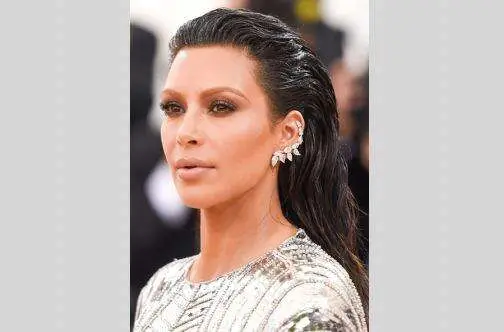
Modern media changes and challenges
Last year I had the honour of giving the keynote address at the Jamaica Broilers Fair Play Journalism Award. In my remarks I pointed out that a feature of modern media is the tendency to trivialise the profound and treat content mainly as entertainment. Increasingly the media have been reposing significant faith in the vacuity of their audience and rewarding it with a constant diet of inanities.
Many media houses take as an article of faith that their audience is largely comprised of people who do not want to know more than what Kim Kardashian was not wearing on her latest jaunt or the sleeping habits of our favourite celebrities. This posture some attribute to the intensely competitive environment in which the media currently operate.
Yet, we should be reminded that one of the most popular series on television is The Big Bang Theory — based largely on the interactions of a bunch of nerds at California Institute of Technology. We tend to underestimate the capacity or the inclination of the man in the street to process complex information.
I pointed out in my presentation that legacy media systems might be able to differentiate themselves from their social media counterparts through the placement of greater emphasis on accuracy and the provision of more thought-provoking content.
I made reference to the trivialisation of the current US presidential campaign — which was then in its primary phase — and its stark resemblance to a reality show. I expressed the fear that such developments would have serious implications for democracy as we know it. What we witnessed last Sunday in the second presidential debate is emblematic of this worrying trend.
The explosion in cable and latterly online offerings has had two significant consequences. One has been the acceleration of specialisation in the delivery of media content. Prior to the advent of cable and digital media technologies, viewers were reliant on free-to-air transmission, which required significant infrastructural investment from media entities. Viewers were dependent on a few networks — which were State-owned in some territories — for the provision of content. There was not much by way of choice with regards to platforms even in the major markets.
Yet the irony is that a greater proportion of the audience was exposed to a wider range of views then than today. How could this be, one might ask, when we have so many media options today?
People are now communicating only with like-minded individuals, which is resulting in the increased polarisation of our political discourse. They are now tuning to media which support their view. Previously, media houses at least pretended to be independent and would usually provide a wide range of viewpoints. In mainstream media markets the venerable outlets were expected to be balanced, even if they had a particular editorial outlook.
Today one does not have to listen to alternative opinions when one can now spend all one’s time devoted to media which cater to narrow interests. Gone are the days in the United States when there were individuals who were referred to as political moderates. It is in this atmosphere of extremism that we have seen the rise of Trump and the exceptional appeal of Bernie Sanders.
I explained in my presentation that today anyone can be a broadcaster. This means that the audience is no longer passive. Armed with the power of social media, Donald Trump has been able to generate enormous unpaid publicity for himself, largely through his tweets, which are then picked up by mainstream media.
Criminal acts are recorded (oftentimes surreptitiously) on mobile devices and transmitted across the globe with immediacy. Some argue that this trend can distort or augment reality; claiming that the level of police killings in America today is far less than what obtained in the 70s and 90s but that social media has amplified the phenomenon.
While many praise the capacity of new media to unearth secrets, their presence can also be seen as rather intrusive. Franklin Roosevelt was able to mask his physical disabilities and his infidelity, and John F Kennedy was able to hide his affairs and a life-threatening illness. Could Kennedy or Roosevelt have managed to secure the nomination of their party in the current media environment?
Some will argue that the intrusive nature of our digitally enabled media is a positive development for our democracy. There are others who are not as sanguine in their assessment; pointing out that in the current environment some of the best prospects for leadership might not offer themselves as a result of the heightened scrutiny.
There is also the issue of instantaneity. Leaders hardly have the luxury of retreating for thoughtful reflection as an immediate response is the expected norm, even in a crisis. Today a reluctance to engage the media is seen as a sign of weakness or malevolence. This has resulted in many intemperate remarks being spouted and many retractions coming in their wake.
It has perhaps given rise to the “leaked” concern of the Hillary Clinton campaign that there should be a “private” and a “public” position on issues. There is really nowhere to hide; not even in the past, as Donald Trump is painfully discovering. Resurrecting one’s past indiscretions is only a click away.
In my presentation I spoke to some of the remedies for survival which might be available to the legacy media outlets. Given that they are often well-resourced, the legacy media outfits can use their assets to stage exclusive activities, such as the
Jamaica Observer Food Awards and Business Leader Awards. The legacy media operations (both local and international) will have to accelerate the process of creating these exclusive proprietary events if they intend to survive in their current configuration.
Years ago it was felt that video would have been a bane for the movie industry which was film-based. It turned out that video became a boon for the motion picture industry. Video was assimilated by what was considered to be the competition. The same will happen to social media as legacy outfits respond to the imperatives of commerce and technology.
Already this trend is emerging in the media, as a number of legacy outfits are now distributing their programming online, thus internationalising their offerings. The media should follow the example of our local artistes and musicians who use our Diaspora as a vector for the diffusion of our culture. Today our cultural influence has percolated well outside of our Diaspora. We see people from so many different cultures around the world practising Jamaican dance moves.
Yet, to internationalise we have to Jamaicanise. The local and international markets are looking to us for Jamaican content.
Schools’ Challenge, Rising Stars, Oliver at Large, The Ity and Fancy Cat Show andRoyal Palm Estate have provided us with irrefutable evidence that Jamaican productions are extremely popular both here and in the Diaspora. The phenomenal success of IRIE FM is also indicative of the appeal of Jamaican-produced content both here and abroad.
Media houses will, however, have to be more accommodating of independent producers. It is onerous for independent producers paying for airtime. Both Lennie Little-White and the venerable Pat Rousseau spoke of the practice of producers having to buy airtime from media houses, pointing out that this approach retards the development of indigenous content.
cpamckenzie@gmail.com

























